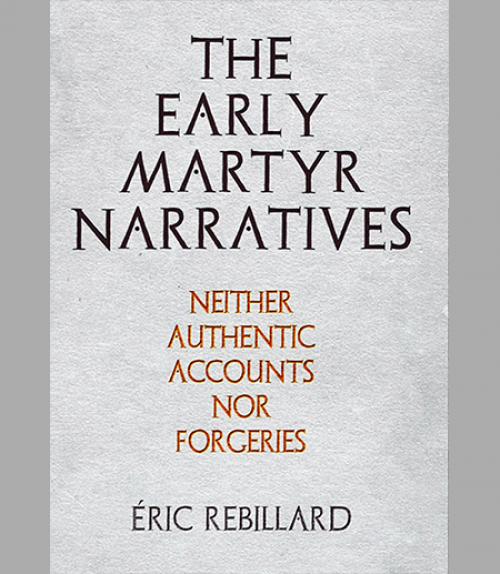For centuries, most scholarship on ancient Christian martyr narratives has focused on proving their authenticity in the service of religious questions.
Éric Rebillard, the Avalon Foundation Professor in the Humanities in the College of Arts and Sciences, takes a different approach to written accounts of early Christian martyrs. As a historian of the Roman empire – in which Christians happened to be living – he reads these texts “as an historian with no confessional interest,” he said.
In his new book, “The Early Martyr Narratives: Neither Authentic Accounts nor Forgeries,” released Nov. 20, Rebillard argues that martyr narratives are “fluid texts,” written anonymously and engagingly, but not as literal historical documents.
“The intended audience did not expect a precise historical report and was prepared to hear or read a version of the story,” Rebillard wrote. “The resultant picture is that of an audience who readily accepts the historicity of the martyr but does not expect to hear or read a truthful story.”
Texts of martyr narratives were read out loud to groups during liturgy for feasts of martyrs, Rebillard said. In the book, he argues that ancient audiences were aware that the stories of martyrs who had died for their faith were constructed narrative, “but there was no doubt in their minds that the martyrdom itself was true.”
“The rest was just a way of interpreting or celebrating the martyrdom,” Rebillard said. “Ancient audiences expected a good, edifying story.”
The first collection of martyr narratives was made in the year 300 by Eusebius of Caesarea, Rebillard wrote. Since then, scholars have collected, revaluated and debated the veracity of particular martyr narratives, categorizing them into “authentic or genuine” and “dubious or false,” he wrote.
“These criteria have since been refined, and the number of texts accepted as authentic has shrunk considerably over time,” Rebillard wrote.
The debate over authenticity continues even among secular scholars today, he wrote, but neither is it satisfactory to set aside entirely the question of the historical reliability of martyr narratives.
“In order to escape the impasse into which either approach leads us,” Rebillard wrote, “I suggest that the first necessary step is to reject the traditional corpus of texts, and to start afresh by establishing which texts can safely be considered the earliest extant narratives.”
In “The Early Martyr Narratives,” Rebillard only examined accounts of those martyred before 260 and written about before 300. He did not worry about “authenticity” and he did not date the texts based on internal elements. This method produced a list of seven texts, including “The Martyrdom of Polycarp,” “The Martyrdom of Pionius,” “The Passion of Perpetua,” and others.
Through this analysis, Rebillard found that the texts were mostly composed long after the time of persecution, in contexts of peace for Christians. He also found that the texts “are and claim to be literature,” he wrote.
“Both the search for authentic accounts and the witch hunt for forgeries are irrelevant to the understanding of Christian martyr texts,” Rebillard wrote. “I advocate that we abandon approaches that regard the texts as authored in favor of treatments that respond to them as living texts, texts that are anonymous, that present no or little stable textual tradition, and that appear in several languages. Each version is to be understood as a performance of a story that has been adapted to a particular context.”
The book contributes to Rebillard’s study of early Christianity from the perspective of Roman history.
“We need to stop instrumentalizing reading of early Christian literature,” Rebillard said. “For martyr narratives, it means in particular that we do not use them as documents about the persecutions.”





